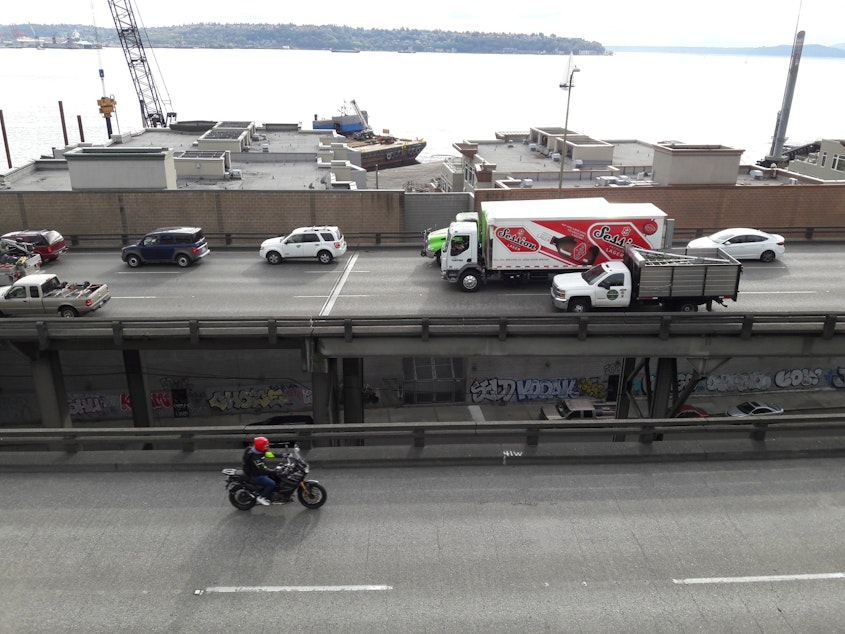The viaduct is coming down. Here's how to prepare your workplace

Bosses, be warned.
When the Alaskan Way Viaduct closes in January, a lot of people are going to be late for work.
When the viaduct closes, the congestion is likely to hurt. It hurt in 2016, when the viaduct had its last big closing. And since then, Seattle's only gotten more crowded.
One way to cut down on congestion, of course, is to get people out of their cars. But people love their cars! They love the convenience, the speed, and the protective bubble of privacy you get when you’re driving to work alone.
“Being able to sing at your lungs in a car by yourself,” is how Derek Wing put it. He's a spokesperson for Pemco Insurance, which did a survey of its drivers in Washington and Oregon.
One thing the survey revealed is why so many people resist switching to public transit.
“That’s a bit of a tougher sell," Wing said. "Only one in five people that we polled said that they would be willing to take public transportation if it was more convenient. So I think that old habits die hard.”
In other words, even if you make it more convenient, transit isn’t going to win over everybody. But when the viaduct closes down 90,000 vehicles a day will no longer have their accustomed route. Which is why some people believe the viaduct closure has a silver lining.
“It’s a really good opportunity to motivate people to get out of their routine," said Madeline Feig of Commute Seattle. That’s a public private partnership between transit agencies and business leaders at the Downtown Seattle Association.
Commute Seattle is offering free commute planning help to employers. “Employers really have a unique potential to influence their employee’s behavior,” Feig said.

There are so many alternatives to try, and Feig's ready to talk through them with your boss. Businesses could let employees work from home or log in from rentable co-working spaces near their homes.
Businesses could flex their business hours or offer unlimited ORCA cards for their workers as a benefit. That would encourage workers to try out light rail or one of the newer rapid ride buses, some of which travel in dedicated bus lanes.
Feig met me at a park overlooking the viaduct. As we spoke, we could see a small boat shoot across the water from West Seattle, bound for the downtown Seattle ferry dock. “Oh, is that the water taxi?” I asked.
“It is!" said Feig. "And that’s another thing I was going to mention."
King County plans to add another water taxi, doubling the service during the viaduct closure, she said. “Folks that are used to coming from West Seattle who are used to driving – it’s actually a pretty sweet morning commute.”
Feig said there’s no reason employers should be surprised by the viaduct closure. “It’s not some sort of natural disaster that was unplanned. We have a couple of months now to get our ducks in a row, so to speak. And we are standing by, ready to help employers.”
If you’re an employer looking for free help managing your employee’s commutes, or if you want to tell your boss about this service, they can find out more at Commute Seattle's project page, or email them at SR99@commuteseattle.com.
That could help with the commute hassle. But of course, it also means fewer people singing in their cars. The video below may help you move on from that loss.




